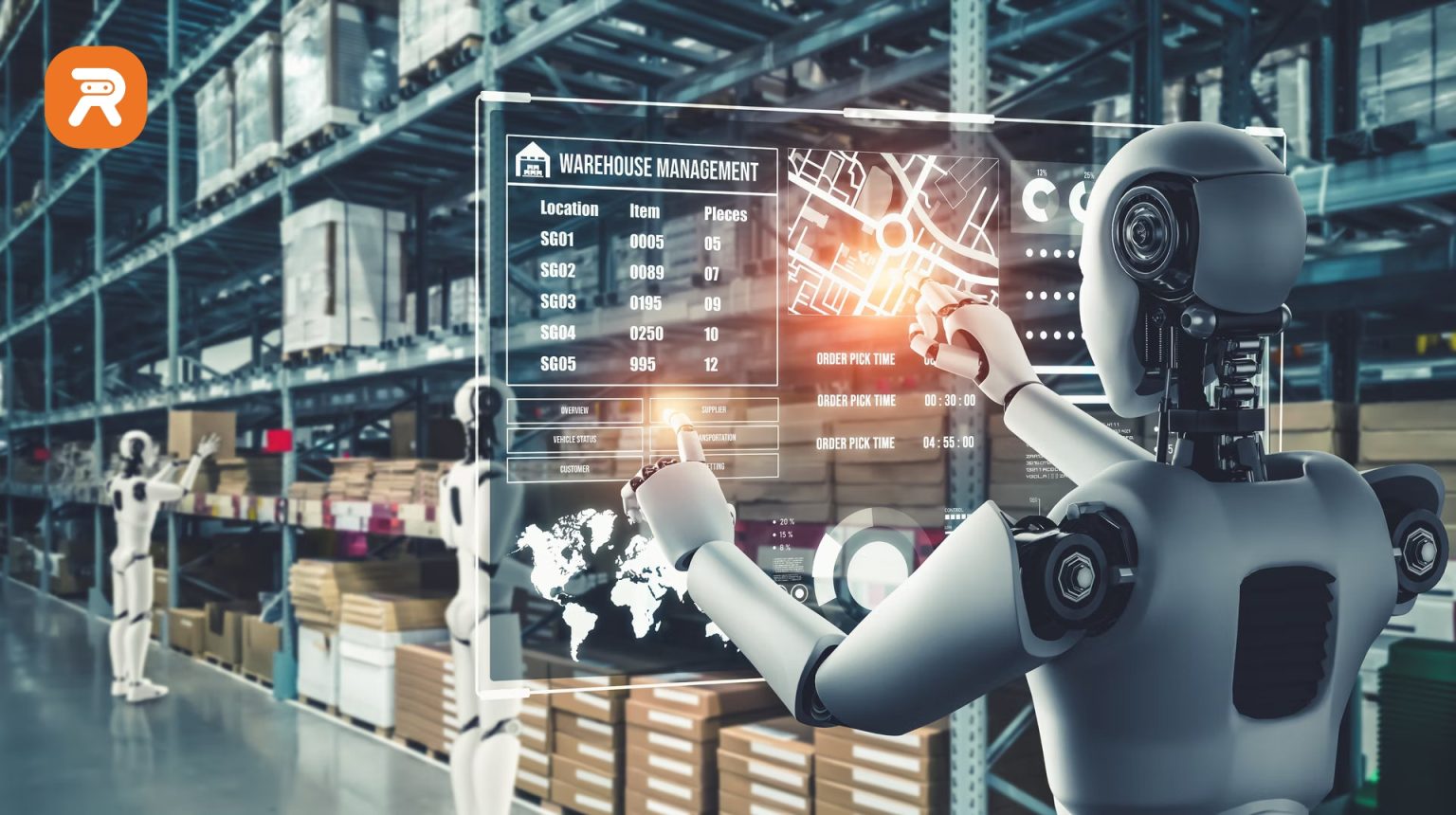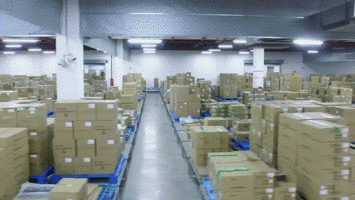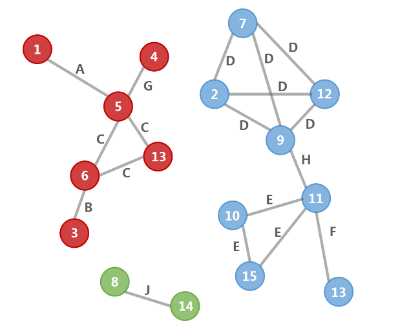How to make the flow and analysis of data drive smart logistics?
In the warehousing and logistics centers of various industries, the application of robotic systems not only improves the operating efficiency and reduces the labor intensity of the staff, but also helps optimize resources and reduce costs, and has good economic benefits.
However, a more intelligent warehouse management system is needed in the warehousing and logistics center to “use” and “manage” the robot system well, cooperate with manpower, and maximize operating efficiency.

Therefore, the intelligent warehouse management system IWMS came into being. IWMS uses the robot system as the execution carrier to realize the visual management of “goods-to-person”, integrates various storage optimization technologies, is stable and reliable, and has good compatibility. It can be fully functionally connected with enterprise ERP and other systems and realizes the rapid deployment of the robot system. And it is efficiently linked with the enterprise business system. In the special session on the smart supply chain, the drama called “Strategies to Win a Thousand Miles” was staged.
IWMS is located in the edge domain layer of AI Cloud architecture, which realizes data aggregation, processing, and intelligent application. So what intelligent algorithms and AI technologies are contained in it?
IWMS consists of warehousing services, task processing services, robot control services, algorithm services, workstation terminal apps, mobile terminal apps, etc.
In an intelligent manufacturing base, IWMS, mobile robots, and robot dispatching control system RCS constitute an intelligent warehousing and in-plant logistics solution, which manages dozens of different types of warehouses in real-time and can process hundreds of thousands of inbound and outbound orders at the same time. Efficiency increased by more than 70%.

IWMS x AI
With the help of AI core technologies based on data mining, machine learning, and deep learning, IWMS provides four major algorithm services: position recommendation, intelligent group wave, inventory allocation, and shelf coldness prediction, which can analyze and process storage business resource data and provide optimal method of execution. In the future, new algorithm services can also be continuously added to adapt to more and more complex business formats.
Data mining refers to the process of searching for information hidden in a large amount of data through algorithms, and it is a hot issue in the field of artificial intelligence and database research.
Machine learning specializes in the study of how computers simulate or implement human learning behaviors to acquire new knowledge or skills and reorganize existing knowledge structures to improve their own performance continuously.
Deep learning is to learn the internal laws and representation levels of sample data, and its ultimate goal is to enable machines to have the ability to analyze and learn like humans.
1. Material mining associated, “only one trip” out of the warehouse
Realize intelligent storage space recommendation algorithm service through data mining association rules, planning algorithms, etc., provide a storage plan with less shelf handling times and high storage space utilization rate, and improve the overall storage efficiency and storage space utilization rate through the association between materials. The relationship improves the order hit rate to further improve the efficiency of the warehouse.
To give a simple example, bolts and nuts are generally used together in the production process, and these two materials are considered to be highly critical. Therefore, it is recommended to put them on the same shelf when they are put into storage, and this can be achieved by moving the shelf once when going out of the warehouse to the production line. The picking of two materials will effectively increase the hit rate of single-shelf orders and reduce the number of shelf handling.

2. Machine learning support, wave clustering group classification
For the group wave order in the IWMS order outbound module, there is coupling between multiple shelves, resulting in many times of shelf handling. According to the idea of global clustering, generalization and subdivision, combined with dynamic programming and machine learning methods, the entire large order pool is decomposed and reorganized. At the same time, factors such as order timeliness and picking efficiency are considered to realize intelligent group wave algorithm services and reduce the average pick time for the order.
For the outbound business of the put wall, multiple orders are issued at one time, and these orders are scattered on different shelves, and materials need to be put on each shelf of the put wall according to the order.
As shown in the figure below, each color block represents a small wave, the number is the order number, and the letters such as ABCD are the shelf number. In an order pool, with the material as the dimension, IWMS combines orders with a high degree of material overlap into a wavelet. Then take the shelf (multi-warehouse) as the dimension, collect the orders of the required materials on the same shelf to form an outbound wave, so as to improve the overall order hit rate of outbound.

In this mode, the average number of handling times per shelf dropped from 2.10 to 1.03, and the efficiency of warehouse picking operations was greatly improved. The intelligent group wave really tried to evolve from “data support” to “data intelligence for decision-making”, controlling the production rhythm in a more flexible way.
3. Intelligent search planning, easy allocation
The inventory allocation algorithm service includes a series of planning algorithms and intelligent search algorithms, which can accurately match order requirements with inventory, and at the same time output the optimal outbound plan with the least number of shelf moves, and take into account special business needs such as clearance or efficiency priority.
For application scenarios with tight storage capacity, you can use the priority emptying warehouse strategy to quickly release storage capacity and improve warehouse turnover. For application scenarios with high-efficiency requirements, the efficiency priority strategy can be used to match the inventory through the demand quantity and complete the delivery with the least number of picks.
As shown in the figure below, for example, there are 5 pieces of sunglasses of a certain brand in stock, which are listed on the 5 shelves of A, B, C, D, and E, and the corresponding quantities are 1, 3, 5, 7, and 9 respectively.

If the demand quantity for outbound at this time is 9, when emptying the warehouse is the priority, then A+B+C (9=1+3+5) will be released for a total of 3 shelves; when efficiency is prioritized, then E (9=9) will be released 1 shelf.
4. In-depth spiritual integration, from analysis to prediction
Through the exploratory analysis of the daily outbound historical data of the materials in the warehouse, effective information is mined from the outbound historical data, and the deep learning technology based on the neural network predicts the outbound volume of each material in the next day to realize the shelf life. Hot and cold prediction algorithm service.
The predicted delivery volume of each material the next day is used as a key indicator to measure the temperature of the material, and then the robot is dispatched to dynamically adjust the position of the shelf in real time. As shown in the figure below, the red block represents high-heat shelves, which will be arranged closer to the picking table.
The intelligent collision of AI, robots, and intelligent algorithms has created an extraordinary intelligent warehouse management system IWMS. On the one hand, it deals with more diverse on-site equipment and more complex operation scenarios; The smart internal logistics system seizes the opportunity to upgrade “smart” manufacturing.

To learn more about the IWMS and get a comprehensive automation solution, feel free to contact us. With a team of highly qualified and experienced engineers, Rozitek is confident to provide the most suitable solution and bring a different change for customers.
ROZITEK – INTELLIGENT INTRALOGISTICS SOLUTIONS
Email: info@rozitek.com
